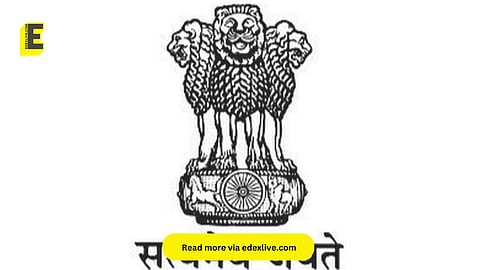

According to the Ministry of Education (MoE), there is a concentration of faculty members with doctoral qualifications in the top 100 institutions in India. The remaining institutions have fewer faculty members with doctoral degrees, states a report by PTI. The mentorship received during doctoral training is seen as crucial in preparing faculty for careers in higher education and thus is considered a serious “handicap”.
Numbers speak
In the analysis conducted for the eighth edition of the National Institutional Ranking Framework (NIRF), it was found that the percentage of faculty with PhDs in the top 100 institutions varies across different fields. For colleges, the minimum percentage of faculty with PhDs is 61.06 per cent, while for management institutions, it is as high as 91.60 per cent. In the remaining institutions, the percentage of faculty with PhDs ranges from a minimum of 33.27 per cent in pharmacy institutions to a maximum of 64.29 per cent in universities.
The average number of faculty members also varies among the top 100 institutions. For pharmacy and management, the minimum average number of faculty members is 34 and 46, respectively, while for universities and overall categories, it is as high as 685 and 645, respectively. In the remaining institutions, the minimum average number of faculty members is 15 and 25 for management and pharmacy, respectively, while the maximum is 242 and 162 for universities and overall categories, respectively.
“Engineering education has witnessed a phenomenal growth in India in past two decades with thousands of engineering institutions, in private sector as well as in government sector, coming-up in almost all parts of the country. As such, discipline of engineering is selected for analysis of faculty data to get a bigger picture of higher education institutions in India,” states the ministry’s report, adding, “The discipline is also undergoing a major challenge in terms of quality and employability of its graduates.”
However, only 44.51 per cent of engineering faculty have doctoral qualifications while over 55 per cent of faculty members have a master’s degree.
More about NIRF
The eighth edition of NIRF was released by Union Minister of Education for State, Rajkumar Ranjan Singh on Monday, June 5.
The ranking framework evaluates institutions based on five broad groups of parameters: teaching, learning, and resources; research and professional practice; graduation outcomes; outreach and inclusivity; and perception.
Institutions are ranked based on the total marks assigned to each of these groups.
Starting from 2023, the NIRF has introduced a new subject category called Agriculture and Allied Sectors and integrated the Innovation ranking, previously conducted by the Atal Ranking of Institutions on Innovation Achievements (ARIIA). The integration aims to reduce the burden on institutions by requiring them to provide data to only one agency.
With these additions, the India Rankings now consist of 13 categories and subject domains, including the expanded Architecture and Planning category.
